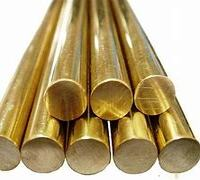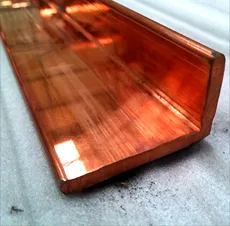1. Introduction
Just 24 hours ago, the London Metal Exchange reported a 3.2% surge in copper prices—the highest jump in six weeks—driven by renewed infrastructure spending in North America and Europe. This spike directly impacts everything from copper rod price to ac copper pipe price, making it more critical than ever to understand which copper products deliver the best value for your specific application.

Whether you’re installing an earthing system, repairing aircon copper tubing, or stripping copper wire for scrap, not all copper rods and strips are created equal. In this guide, we’ll compare seven essential types of copper rods and strips, highlighting their unique properties, ideal uses, and cost considerations.
2. Copper Rods for Electrical Earthing
When it comes to grounding electrical systems, two main options dominate the market: solid copper earth rods and copper bonded ground rods.
Solid earthing rod copper (often called ground rod copper) offers superior conductivity and corrosion resistance but comes at a premium price. These are typically made from high-purity electrolytic copper and are ideal for high-moisture or corrosive soil environments.
On the other hand, copper bonded earthing rods—also known as copper bonded steel or copper clad steel earth rods—feature a steel core electroplated with a thick layer of copper. They’re more affordable (a key factor when checking earthing rod price) and still provide excellent performance in most residential and commercial settings.
- Copper bonded ground rod: lower cost, good durability
- Solid copper earth rod: higher conductivity, longer lifespan
Both types meet international standards like IEEE 80 and IEC 62561, but always verify local codes before installation.
3. Copper Rods for Joining and Welding
Not all copper rods are used for grounding. Many serve as filler materials in metal joining processes.
Copper brazing rod and copper to copper brazing rods are commonly used in HVAC and plumbing to join copper pipework without melting the base metal. These rods often contain phosphorus or silver alloys to improve flow and joint strength.
For true fusion welding, copper welding rod (or copper rod for welding) is used in specialized applications like repairing cast iron or joining dissimilar metals. However, pure copper to copper welding rod is rare—most welding rods are actually copper alloys designed to handle thermal stress.

Important note: Copper rod welding requires preheating and controlled cooling to avoid cracking. It’s not a DIY-friendly process unless you’re using low-temp brazing methods.
4. Round Bar Copper vs. Flat Strip Variants
Beyond rods, flat copper forms like copper strip and copper flat bar serve distinct roles.
Round bar copper (also called copper round bar) is machined into bushings, bearings, or electrical connectors. It’s sold by diameter (e.g., 15mm copper tube equivalents in solid form) and prized for its uniform grain structure.
Flat copper strips—including 1mm copper strip, 25x3mm copper earth strip, and nickel plated copper strip—are used in busbars, grounding grids, and even decorative edging. Flexible copper bus bar variants allow bending without cracking, crucial in tight electrical panels.
Specialty alloys like beryllium copper strip offer spring-like properties for connectors, while copper alloy strip balances cost and performance in industrial settings.
5. Stripping Copper Wire: Methods and Economics
With copper prices rising, stripping copper wire for scrap has become increasingly profitable—but only if done right.
The best way to strip copper wire depends on volume and insulation type. Manual strippers work for small jobs, but for bulk operations, mechanical wire granulators or thermal strippers (though burning copper wire for scrap is discouraged due to toxic fumes) are common.
Key tips:
- Never burn insulation off—it releases dioxins and lowers scrap value
- Use automatic strippers for consistent results
- Sort by grade: bare bright > insulated > mixed

Recyclers pay top dollar for clean, stripped copper strip wire. Always check ‘copper strip price’ trends before selling.
6. Copper in HVAC and Plumbing Systems
Air conditioning copper pipe remains irreplaceable in refrigerant lines due to its thermal conductivity and leak resistance.
Common sizes like 1/2 copper pipe, 3/4 copper tubing, and 22mm copper pipe are selected based on system tonnage and copper pipe sizing charts. Proper bending copper pipe avoids kinks that restrict flow.
While PEX plumbing pipes are gaining ground in water supply lines, copper pipe and fittings still dominate in high-temperature and high-pressure zones. Resoldering copper pipe joints is routine maintenance—but always clean oxidation first with emery cloth.
7. Market Trends and Sourcing Tips
Current copper rod price fluctuations mean timing matters. Buying in bulk during dips can save significantly on copper bars for sale or roll of copper strip orders.
For localized needs, search ‘copper strip near me’ to find distributors carrying copper strip roll, copper edging strip, or even niche items like copper tape for snails (used in garden pest control).
Also consider alternatives: copper clad steel ground rod offers 90% of solid copper’s performance at half the cost—ideal for large-scale earthing projects.
8. Conclusion
From earthing rod copper to flexible copper bus bar, the versatility of copper rods and strips is unmatched. Understanding the differences between solid, bonded, and clad variants—and matching them to your project’s electrical, mechanical, or economic needs—is key to maximizing performance and value. As global demand pushes copper prices upward, smart selection and proper handling (especially when stripping wire for recycling) will only grow in importance.
Our Website founded on October 17, 2012, is a high-tech enterprise committed to the research and development, production, processing, sales and technical services of ceramic relative materials such as 7. Our products includes but not limited to Boron Carbide Ceramic Products, Boron Nitride Ceramic Products, Silicon Carbide Ceramic Products, Silicon Nitride Ceramic Products, Zirconium Dioxide Ceramic Products, etc. If you are interested, please feel free to contact us.

